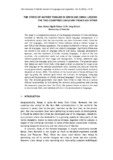| dc.description.abstract | This paper is a comparative analysis of the language situations in China and Kenya, intended to identify the important lessons about language management in a multi-ethnic society that the two countries can learn from each other. China has over 130 languages, with Mandarin Chinese (Hanyu) being a mother tongue to over 90% of the Chinese population. The situation is different in Kenya, which has over 40 languages, most of which are minority languages. Significant differences are noted in the areas of language reforms and policy, language development agencies, and the treatment of ethnic minority languages. In each of the two countries, the constitution spells out some of the language concerns and the relevant guidelines for their usage and management. In Kenya, additional legal texts about the language policy are currently in preparation. The greatest lesson that Kenya can learn from China is the need to insist on catering for issues to do with language at the national government level, resisting any pressure from the county governments regarding variations on the relevant constitutional provisions (Republic of Kenya, 2010). The drafters of the Constitution of Kenya 2010 got this right by giving the national government the function of managing “Language policy and the promotion of official and local languages” (Fourth Schedule, Part 1 (5)). The national government must learn from China to treat this as a serious national responsibility by formulating the relevant policy guidelines and enacting the necessary supportive laws. For China, the greatest lesson to learn is the need to also include NGOs and individual efforts in the development of languages. | en_US |



